Pre-Flight Preparations
Ensure passport validity and secure necessary visas․ Pack essentials like chargers‚ snacks‚ and comfortable clothing․ Select seats strategically for comfort․ Address flight anxiety with relaxation techniques․ Purchase travel insurance for unforeseen circumstances․ Plan ahead to avoid last-minute stress․

1․1․ Checking Passport Validity and Visa Requirements
Before booking your flight‚ ensure your passport is valid for at least six months beyond your return date‚ as many countries enforce this rule․ Research visa requirements for your destination‚ as some nations require applications well in advance․ Secure any necessary visas or travel permits to avoid entry issues․ Double-check expiration dates and visa policies to prevent last-minute complications․ For countries offering e-visas or visa-on-arrival‚ verify the eligibility criteria and application process․ Keep digital copies of your passport and visa for emergencies․ If your passport is nearing expiration‚ renew it early to avoid delays․ Familiarize yourself with entry regulations‚ such as required vaccinations or COVID-19 restrictions․ Ensure all travel documents are up to date and meet the destination’s requirements․ Proper preparation in this step guarantees a smooth start to your journey․
1․2․ Packing Essentials for Long-Haul Flights
- Clothing: Wear loose‚ breathable‚ and layered clothing for comfort․ Pack a change of clothes in your carry-on for unexpected delays or spills․
- Electronics: Bring a universal power adapter‚ noise-canceling headphones‚ a portable charger‚ and a tablet or e-reader for entertainment․
- Travel documents: Keep your passport‚ visa‚ boarding pass‚ and travel insurance documents easily accessible․
- Toiletries: Include a travel-sized toothbrush‚ hand sanitizer‚ eye mask‚ earplugs‚ and any personal hygiene items․
- Health essentials: Pack pain relievers‚ antihistamines‚ and any prescribed medications․ Stay hydrated with a reusable water bottle․
- Snacks: Bring non-perishable snacks like nuts‚ dried fruit‚ or energy bars to avoid relying on limited meal options․
- Comfort items: Consider a neck pillow‚ blanket‚ or scarf for added comfort during the flight․
- Miscellaneous: Include a pen for customs forms and a small first-aid kit with band-aids and antiseptic wipes;
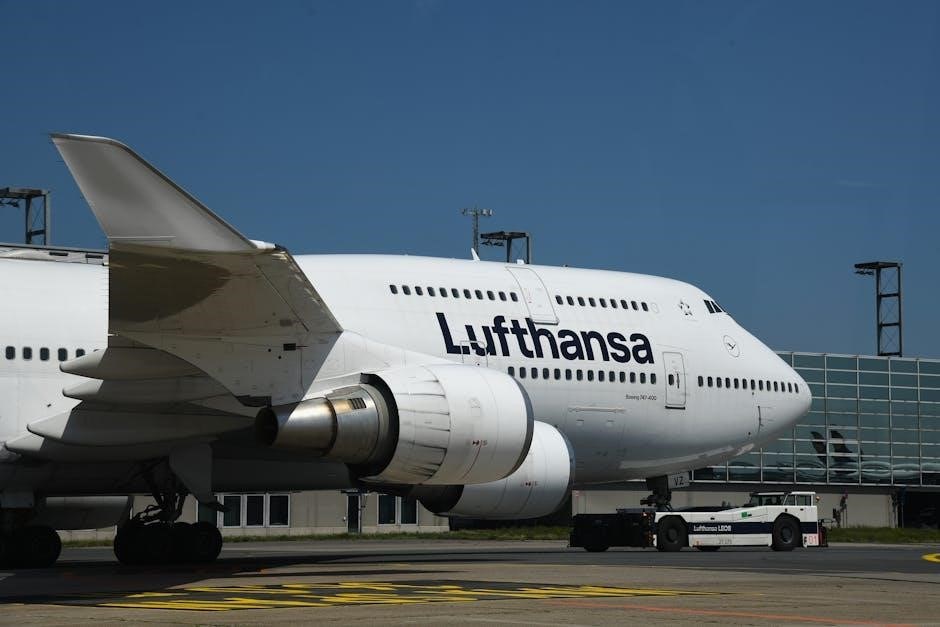
Always check airline baggage policies to ensure compliance with size and weight restrictions․ Organize your luggage to avoid last-minute chaos and ensure a stress-free journey․
1․3․ Choosing the Best Seat for Comfort
Selecting the right seat can significantly enhance your flying experience‚ especially on long-haul flights․ Opt for a window seat to lean against the plane’s wall‚ reducing disturbances from other passengers․ Aisle seats offer more freedom to move around but may expose you to noise from food carts․ Avoid seats near restrooms or galley areas‚ as they can be noisy and busy․ Over-wing seats typically experience less turbulence‚ making them ideal for a smoother ride․ If budget allows‚ consider upgrading to premium economy or business class for more legroom and recline․ Use seat map tools to view aircraft layouts and choose seats with extra legroom or privacy․ Booking early ensures better seat availability․ Prioritize comfort based on your preferences to ensure a relaxing journey․
1․4․ Managing Flight Anxiety and Stress
Flight anxiety can be challenging‚ but there are effective strategies to manage it․ Start by practicing deep breathing exercises and progressive muscle relaxation to calm your nerves․ Visualize a smooth journey and focus on positive affirmations to build confidence․ Educate yourself about flying mechanics to demystify the experience․ Consider enrolling in a fear of flying course or consulting a therapist for personalized coping techniques․ Inform the flight crew about your anxiety so they can offer support․ Distract yourself with books‚ movies‚ or calming music during the flight․ Avoid caffeine and alcohol‚ as they can heighten anxiety․ Herbal teas like chamomile may help promote relaxation․ Plan ahead‚ stay occupied‚ and remind yourself that flying is one of the safest modes of transportation․ By addressing anxiety proactively‚ you can make your journey more enjoyable and stress-free․
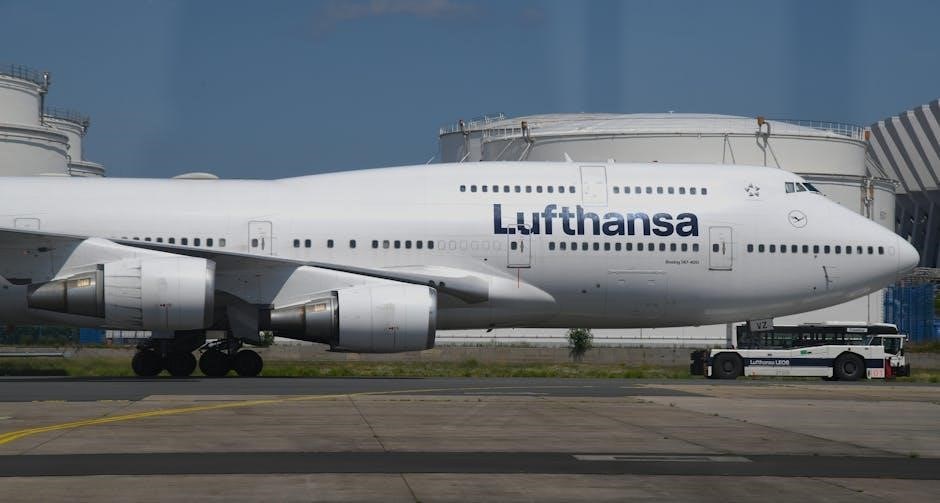
1․5․ Importance of Travel Insurance
Travel insurance is a crucial aspect of pre-flight preparations‚ offering financial protection against unforeseen circumstances․ It covers medical emergencies‚ trip cancellations‚ delays‚ and lost luggage‚ ensuring peace of mind․ With insurance‚ you can avoid significant out-of-pocket expenses for unexpected medical treatments or evacuation․ Trip cancellation coverage reimburses prepaid costs if your plans are disrupted due to illness‚ natural disasters‚ or other eligible events․ Delay coverage provides compensation for accommodation and meals when flights are postponed․ Additionally‚ insurance often includes assistance services‚ such as 24/7 support for lost passports or legal issues․ Always review policy details to ensure it aligns with your travel needs․ Investing in travel insurance is a proactive step to safeguard your journey and finances․ It allows you to focus on enjoying your trip‚ knowing you’re protected against life’s unpredictability․ Don’t overlook this essential precaution to ensure a stress-free and secure travel experience․
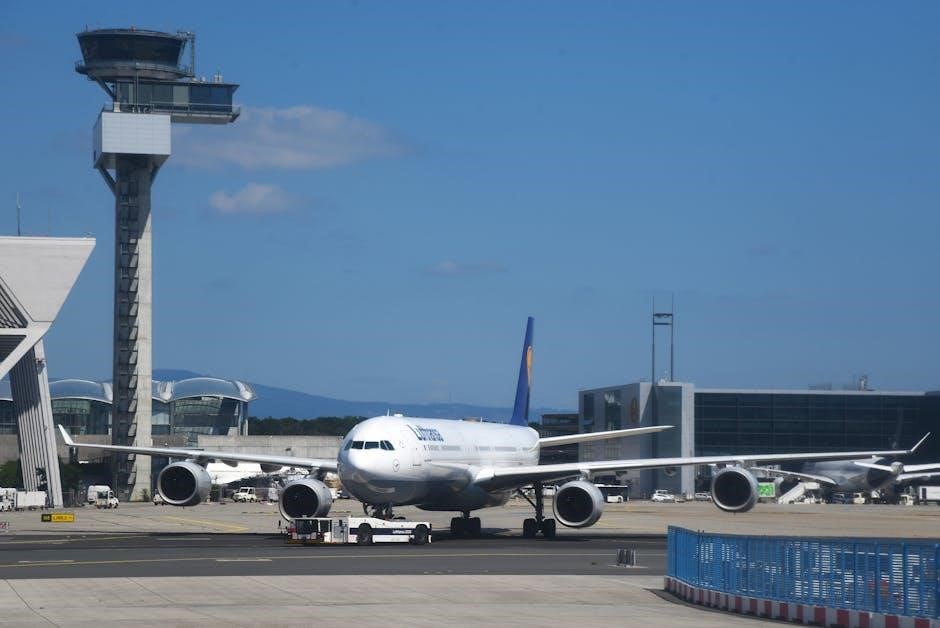
Airport Procedures
Streamline your journey with efficient check-in and luggage handling․ Navigate security checks swiftly and understand airport facilities․ Prepare for potential delays and cancellations‚ ensuring a smooth transition through the airport environment․
2․1․ Checking-In and Dropping Off Luggage
Check-in online 24-48 hours before your flight to secure your seat and print or download your boarding pass․ Arrive at the airport with plenty of time to spare—ideally 2-3 hours for domestic flights and 3-4 hours for international․ Prepare your luggage according to airline weight and size restrictions‚ ensuring proper tagging․ Use self-service kiosks or proceed to designated check-in counters to drop off your bags․ Be ready to present your passport‚ visa (if required)‚ and boarding pass․ After dropping off luggage‚ ensure you receive a baggage claim tag for each checked item․ Double-check the destination tags on your luggage to avoid routing errors․ If you encounter issues‚ such as oversized or overweight bags‚ resolve them promptly with airline staff․ Efficiently completing this step ensures a smooth transition to security and beyond․
2․2; Navigating Security Checks Efficiently
Arrive prepared for security checks to minimize delays․ Wear easy-to-remove shoes and avoid clothing with metal accents․ Ensure electronics are accessible in your carry-on․ Liquids‚ gels‚ and aerosols must be in 3․4-ounce containers within a clear‚ quart-sized zip-top bag․ Remove laptops and liquids from bags for screening․ Keep your boarding pass and ID readily available․ Opt for TSA PreCheck or similar programs for expedited screening․ Familiarize yourself with prohibited items to avoid confiscation․ Stay patient and organized‚ placing items in bins systematically․ After screening‚ quickly gather belongings to keep the process efficient․ Efficient navigation of security ensures a smoother airport experience‚ allowing more time to relax or explore before your flight․
2․3․ Understanding Airport Layout and Facilities
Familiarizing yourself with the airport layout is crucial for a seamless experience․ Airports are typically divided into terminals‚ each housing check-in counters‚ baggage drop-off areas‚ security checkpoints‚ and gates․ Locate essential facilities like restrooms‚ water fountains‚ and charging stations․ Duty-free shops‚ restaurants‚ and lounges are often situated after security․ Download airport maps or apps to navigate efficiently․ Knowing the location of help desks‚ currency exchange‚ and medical services can be beneficial․ Prioritize visiting facilities before reaching your gate to avoid last-minute rushes․ Understand the layout to manage time effectively‚ ensuring you reach your gate well before boarding․ Efficiently navigating the airport reduces stress and enhances your overall travel experience․

2․4․ Handling Flight Delays or Cancellations
Flight delays or cancellations can be stressful‚ but staying informed and prepared is key․ Monitor notifications from your airline and check the airport’s flight status screens regularly․ Understand your rights under airline policies and applicable regulations‚ such as compensation or rebooking options․ Keep essential contact information handy‚ including the airline’s customer service and your travel insurance provider․ Having a backup plan‚ such as alternative flights or accommodation‚ can mitigate disruptions․ Stay calm and communicate clearly with airport staff to explore solutions․ Pack snacks and entertainment in case of prolonged waits․ Maintaining patience and composure will help you navigate the situation effectively․ By being proactive and knowledgeable‚ you can reduce the impact of delays or cancellations and ensure a smoother travel experience․
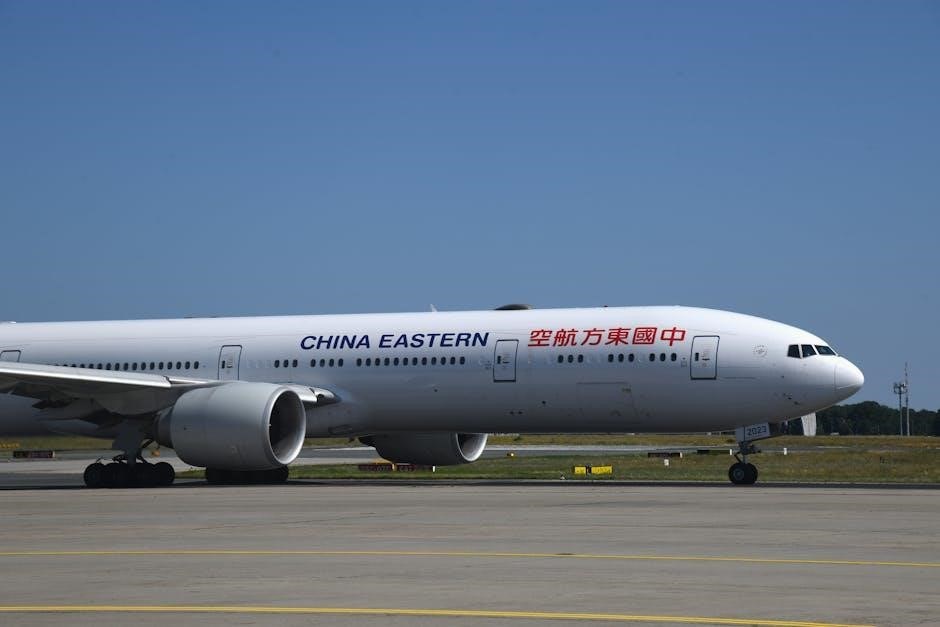
In-Flight Experience
- Maximize comfort by adjusting your seat and using pillows․
- Stay entertained with movies‚ books‚ or downloaded content․
- Manage jet lag by aligning sleep with destination time․
- Stay hydrated and eat nutritious snacks or meals․
- Practice airplane etiquette to ensure a pleasant journey․
3․1․ Maximizing Comfort During the Flight
Maximizing comfort during long flights is crucial for an enjoyable journey․ Dress in loose‚ breathable clothing and layers to adjust to changing cabin temperatures․ Bring a travel pillow or neck support for better posture․ Stay hydrated by drinking plenty of water and avoid alcohol․ Use noise-canceling headphones to block out ambient noise and immerse yourself in entertainment․ Opt for a window seat to lean against the plane’s wall and avoid being disturbed․ Stretch periodically by walking up and down the aisle to prevent stiffness․ Adjust your seat settings‚ such as reclining or using a footrest‚ to find the most comfortable position․ Avoid heavy meals and opt for light‚ nutritious snacks instead․ Download movies‚ books‚ or podcasts beforehand to keep yourself entertained․ Finally‚ plan your sleep schedule according to your destination time zone to minimize jet lag․ By prioritizing these comfort tips‚ you can make your flight experience more relaxing and enjoyable․
3․2․ Managing Jet Lag and Sleep Patterns
Managing jet lag and maintaining healthy sleep patterns is essential for a smooth transition during long flights․ Start adjusting your sleep schedule a few days before departure to align with your destination time zone․ If traveling east‚ go to bed earlier; if west‚ stay up later․ Upon boarding‚ set your watch to the destination time to mentally acclimate․ During the flight‚ stay hydrated and avoid heavy meals or caffeine‚ which can disrupt sleep․ Use eye masks and earplugs to create a restful environment․ If needed‚ consider melatonin supplements after consulting a healthcare professional․ Upon arrival‚ expose yourself to natural light to reset your internal clock․ Engage in light physical activity‚ such as stretching or walking‚ to stay alert during the day․ Avoid naps longer than 20 minutes to prevent deep sleep cycles․ By implementing these strategies‚ you can reduce the effects of jet lag and adapt quickly to your new time zone‚ ensuring a more enjoyable trip․
3․3․ Staying Entertained and Productive
Staying entertained and productive during long flights is key to making your journey enjoyable․ Download movies‚ TV shows‚ music‚ and podcasts on your devices before the flight to ensure offline access․ Bring a book‚ e-reader‚ or magazine for a relaxing read․ Consider packing a portable charger to keep your devices powered․ Use noise-canceling headphones to immerse yourself in your entertainment or block out distractions․ If you prefer productivity‚ use the time to work on your laptop or plan your trip itinerary․ Some airlines offer in-flight Wi-Fi‚ allowing you to stay connected or stream content․ Additionally‚ bring a journal to jot down thoughts or plan your travels․ Don’t forget to stretch and move occasionally to stay comfortable․ By combining entertainment and productivity‚ you can make the most of your flight time and arrive feeling refreshed and prepared for your destination․
3․4․ Eating and Staying Hydrated on the Plane
Eating and staying hydrated are crucial for comfort during long flights․ Opt for light‚ nutritious meals and avoid heavy or greasy foods that may cause discomfort; Bring your own snacks‚ such as fruits‚ nuts‚ or energy bars‚ to ensure you have options you enjoy․ Stay hydrated by drinking plenty of water throughout the flight‚ as the cabin air can be dry․ Avoid excessive caffeine and alcohol‚ as they can dehydrate you․ If you have specific dietary needs‚ inform the airline in advance to request special meals․ Don’t rely solely on airline food; pack your own meals to maintain control over your diet․ Use a reusable water bottle and refill it after security to stay hydrated․ Additionally‚ consider bringing electrolyte-rich drinks to help combat dehydration․ Eating and drinking mindfully will help you feel more energized and prepared for your journey ahead․
3․5․ Understanding Airplane Etiquette
Respect and consideration are key to maintaining a positive environment for all passengers․ Keep noise levels down‚ especially when using headphones‚ and avoid loud conversations․ Be mindful of personal space and refrain from invading others’․ When storing or retrieving items from overhead bins‚ do so carefully to avoid disturbing nearby passengers․ Avoid strong-smelling foods and opt for odor-neutral snacks․ Keep your seatbelt fastened when required and respect the recline function‚ ensuring it doesn’t infringe on the person behind you․ Dress comfortably but neatly‚ and avoid applying strong perfumes or colognes․ Follow cabin crew instructions and be patient during boarding and disembarking․ Treat fellow travelers and staff with kindness‚ fostering a courteous atmosphere․ By practicing good etiquette‚ you contribute to a pleasant flying experience for everyone on board․
Post-Flight Recovery

After landing‚ collect luggage and arrange transportation․ Recover from jet lag by adjusting sleep patterns and staying hydrated․ Rest to overcome fatigue and plan leisurely activities to ease back into your routine gradually․

4․1․ Clearing Immigration and Customs
When arriving at your destination‚ proceed to the immigration counter with your passport and visa ready․ Be prepared to answer questions about your travel plans and accommodation․ After clearing immigration‚ collect your baggage and head to customs․ Declare all restricted or prohibited items to avoid penalties․ Familiarize yourself with duty-free allowances to ensure compliance․ Organize your belongings for smooth scanning and inspection․ Stay calm and patient‚ as delays may occur during peak times․ Keep all necessary documents easily accessible to expedite the process․ If traveling with restricted items like food or plant products‚ declare them promptly․ Understanding local regulations can prevent fines or confiscation․ Biometric systems may be used for identity verification in some countries․ Ensure your documents are valid and up-to-date to avoid any issues․ Clearing immigration and customs efficiently sets a positive tone for your trip‚ allowing you to begin your journey smoothly․
4․2․ Collecting Luggage and Handling Lost Items
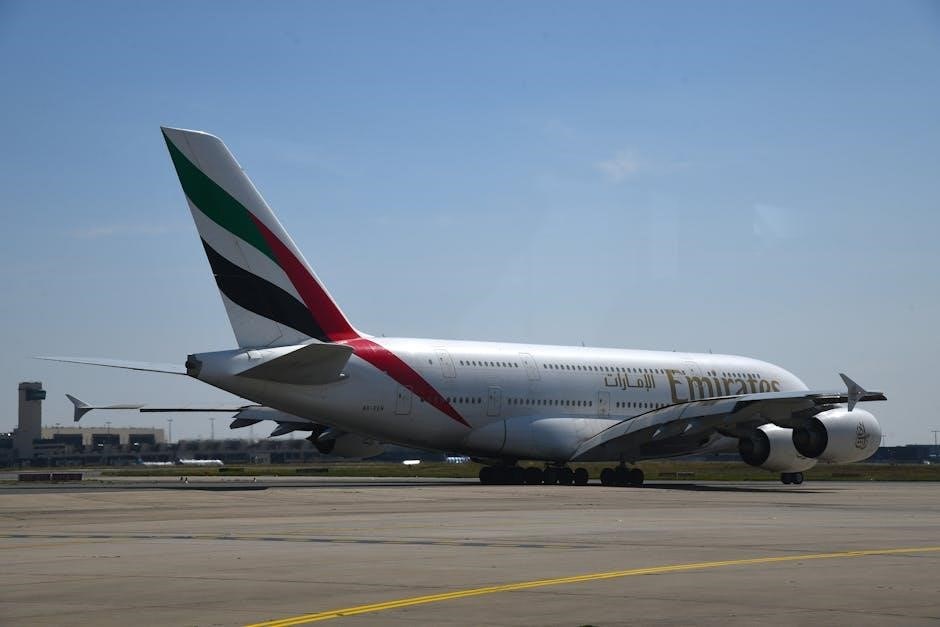
After clearing immigration‚ proceed to the baggage claim area to collect your luggage․ Check the baggage tags to ensure you pick the correct items․ Inspect your luggage for damage or tampering before leaving the area․ If your luggage is missing or damaged‚ report it immediately to the airline’s baggage claim office․ Provide detailed descriptions and evidence to facilitate recovery․ Keep your baggage claim ticket handy for reference․ If items are lost‚ file a claim with the airline and consider contacting your travel insurance provider․ Use distinctive tags or markings on your luggage to prevent mix-ups․ Stay patient and persistent when resolving luggage issues․ If delays occur‚ request essential items like toiletries or clothing․ Airlines typically have a process to locate and return lost luggage․ Stay informed and follow up regularly to ensure your belongings are returned promptly․ Proper handling of luggage issues ensures a smoother transition to your destination․
4․3․ Arranging Transportation from the Airport
Plan your transportation in advance to ensure a smooth transition from the airport to your destination․ Research available options such as taxis‚ public transit‚ ride-hailing services‚ or private transfers․ Pre-book a trusted service to avoid last-minute hassles․ Check reviews and pricing to choose the most convenient option․ Public transit can be cost-effective‚ but may require navigating unfamiliar routes․ Taxis and ride-hailing services offer door-to-door convenience․ Consider renting a car if you plan to explore the area extensively․ Ensure your phone is equipped with necessary apps or local currency for payments․ Share your travel details with someone for safety․ Familiarize yourself with airport signs and transportation counters to avoid confusion․ Verify pickup locations and meeting points to avoid delays․ Keep all necessary documents and contact information readily accessible․ Efficient transportation planning enhances your overall travel experience and reduces stress after landing․ Always prioritize safety and reliability when selecting a service․ Arriving prepared ensures a seamless journey from the airport to your accommodation․ Proper planning helps you start your trip on a positive note․
4․4․ Recovering from Jet Lag and Fatigue
Recovering from jet lag and fatigue requires a strategic approach to reset your body clock and regain energy․ Start by adjusting your sleep schedule a few days before your trip to align with your destination’s time zone․ Stay hydrated by drinking plenty of water during and after the flight‚ as dehydration exacerbates fatigue․ Avoid caffeine and alcohol‚ which can disrupt sleep patterns and worsen jet lag․ Upon arrival‚ expose yourself to natural light to help regulate your circadian rhythms․ Engage in light physical activity‚ such as stretching or a short walk‚ to boost energy levels․ Consider taking melatonin supplements‚ but consult a healthcare professional first․ Eat light‚ nutritious meals to avoid digestive discomfort․ Rest when needed‚ but avoid long naps that could interfere with nighttime sleep․ Gradually adapt to the local routine‚ and prioritize sleep to fully recover․ Patience is key‚ as it may take a few days for your body to adjust․ Proper recovery ensures you can enjoy your trip without lingering fatigue․